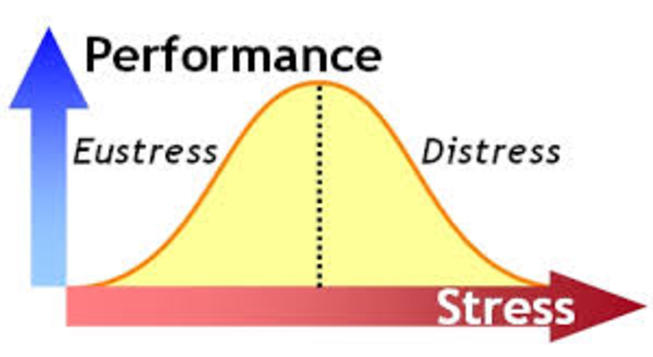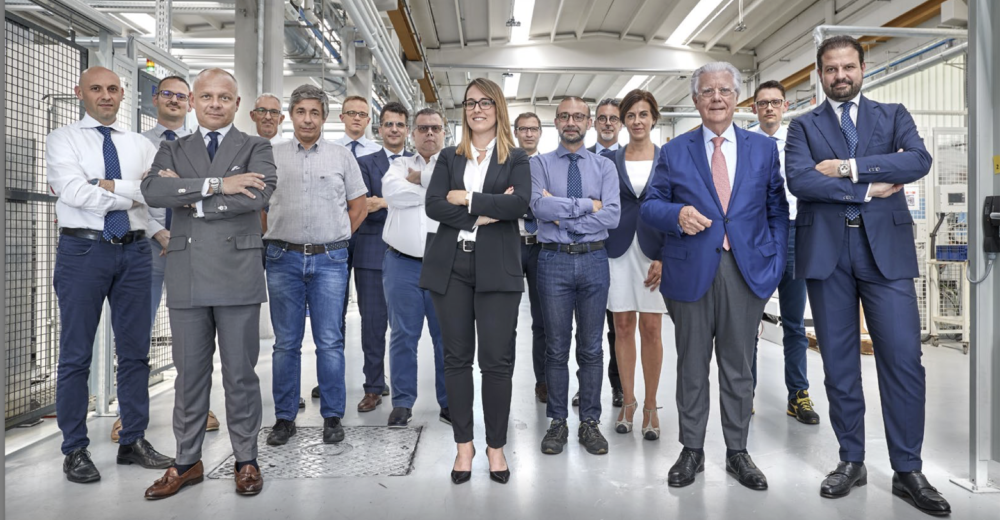Stressed at work? Yes, just enough!


If you point a taser at a 70-year-old man with heart disease, who is close to being obese and hasn’t exercised in 30 years and threaten to shock him if he doesn’t run 100 meters in under 30 seconds, you stress him so much that he might have a heart attack before he even starts.
If you did the same to Usain Bolt, he would shrug his shoulders and, without producing a drop of adrenaline, run the distance, return, and help you put the taser back in its holster.
We begin this article with a hyperbole to clarify a crucial concept: stress is the activation of a physiological response to environmental demands, relative to an individual’s capabilities, not an absolute state. Given that 40% of workers in Italy report feeling stressed and want to change jobs, it’s important to understand what stress means and what we can do to improve performance and talent retention.
A negative reinforcer—typically a threat, pressure, or request—can be a source of discomfort for some, but not necessarily for others. The “stress” response is triggered by an individual’s subjective perception of their perceived resources, which can help alleviate the discomfort they experience.
The stimulus becomes stressful based on what you know or can do at that moment.
From an evolutionary perspective, stress – understood as a physiological response – is a legacy of our “recent” predator-prey condition in the prehistoric world. Lions and tigers threatened us, and if we, homo sapiens, did not have a system to divert energy from non-essential processes (like digestion) to focus it on our muscles for defense or escape, we would have died before passing on our traits to our yet-to-be-born children.
Nature has taken tens of thousands of years to select this response, which is both involuntary and necessary. But today, the world is changing at an exponentially faster rate than our physiology can adapt, as it cannot be updated like a firewall or an app.
We live in a hyper-rational, hyper-codified, hyper-regulated, and hyper-bureaucratic world, with a brain “selected” from a wild and competitive environment.
Our task is to harness these mechanisms without falling victim to them or becoming oppressors of our collaborators.
So, stress can be “good” or “bad”, It can produce a functional response to environmental demands, like the excitement that drives us to a competition we’re well-prepared for (eu-stress). Alternatively, it can be dysfunctional, like the panic that silences a well-educated contestant when faced with a simple question from the evening quiz host (dis-stress).
We must therefore understand how to activate ourselves and our collaborators by “eustressing” them effectively without “distressing” them.
A balance between two extremes: boredom and stress
Medicine has amply demonstrated the consequences of chronic stress on our bodies, but it has also shown that inactivity and a sedentary lifestyle can cause equally serious harm. If we were to simplify our motivation patterns, which are what drive us, we could say that we oscillate between two poles:
- excitement, in all its forms – from sensual to intellectual, linked to verbal interactions with people, images, and texts.
- relaxation, understood in all its forms, from physical relaxation – such as satisfying one’s appetite and sleeping – to relational relaxation, when we seek to be alone or “do something else” to “clear the mind.”
In terms of innate (and not learned) responses, one of the characteristics that sets us humans (and some primates) apart from other mammals is that we get bored more easily. We fall into a state of excessive relaxation that drives us to seek excitement in any form. Those who study evolution believe that this innate trait has helped “push” us further.
However, the complete absence of environmental demands can also lead to harmful consequences for the human body, such as depression, anxiety, or anger attacks. But without delving into the pathological, let’s just consider how many coffees we drink to stay alert during boring days at the desk or endless meetings with speakers of questionable oratory skills…
And what does this have to do with job performance?
To develop ourselves and our team members, and to get the most out of them, we need to do two seemingly contradictory things: stimulate them without stressing them.
How to eu-stress your collaborators
Stimulate them to the extent that we must give them challenging objectives, that is, higher than what they have shown so far: which means pursuing the same results, but with one quid percent less resources (time, budget, collaborators, etc.) or, for equal resources, ask him for an extra quid percent.
How much is that quid percent? This depends on the person in front of you: when we assign new and more challenging goals to employees, we need to monitor the success rate and well-being of the person.
If the success rate falls below 80% of Pareto’s memory, it means that we are demotivating them by putting them too often in a condition to fail. We risk losing them, we risk dis-stressing them because we are taking away the gratification inherent in the challenge, “succeed”.
What if they achieved their goals in more than 80% of cases, but to do so they start losing the enthusiasm and gratification inherent in the same challenge that we assigned them? Then there are the first signs of a possible “burnout” that can lead to frustration and total disinterest in your work.
Monitoring the emotional response of employees is crucial because it will allow us to do 2 things:
- acting on energy, encouraging and positively reinforcing every effort – every single small behavior – that will lead to the result with its associated gratification, but too distant in time to give them energy today;
- offer our help to employees to fill their gap of resources before it is too late, before they are “distresses”, precisely.
We used the word “burnout”, but we do it with caution: we know that it describes a very precise syndrome and often linked to health or educational professions, when the professional is exposed to the most powerful stressogenic stimulus: another human being in a state of suffering and demand. However, there are many jobs or tasks in which the contact with the internal or external client is frequent and demanding (and we who do consultants know something about this): then, it is necessary to look at the “weak signals” of those “good colleagues who are committed” who risk to burn because we have forgotten that they are human, whose behavior has as fuel the emotional and mental energy, i.e. social reinforcements (“pats on the back”) and the inner ones that we give ourselves for having done our task or having pursued a mission worthy of our life.

It is a matter of raising the bar a little higher, little at a time, without them noticing: because we know that man gets used to everything even to stress, but in case of eu-stress his response is functional and causes positive results; in case of distress, anxiety and aggression will take over and at that point the escape will be inevitable and there will be no employer branding strategy able to contain it.
To avoid reaching the breaking point it is essential that companies and managers know how to develop the necessary skills to guide people towards increasingly ambitious goals, and above all become able to make them evolve better. The Executive Master Lean Lifestyle®is a high-impact training course aimed at managers who want to improve their driving skills and learn how to make the best use of available human resources.
Articolo a cura di:

Alessandro Valdina
Principal
In his university studies there are Communication, Finance and Applied Behavior Analysis. Head of Lenovys' "People & Organization" area, as a management consultant helps organizations achieve safety, quality, production, service and sales goals through measurable improvement in individual and group behaviors. His areas of expertise cover Change Management, Strategy Deployment, Lean Office, Performance Management, Leadership Development and Training Technologies.
Read more
Prossimi eventi










